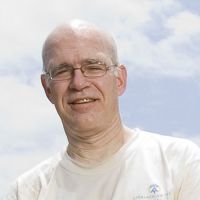Lin et al., 2015
Towards an International Network of Critical Zone Observatories
Lin, Hangsheng, Steve Banwart, Timothy Filley, Dali Guo, Daniel Richter, Susan Trumbore, Harry Vereecken and Joerg Voelkel (2015)
EP31A-0980 International Critical Zone Research: Status, Networking, and Challenges Posters, presented at 2015 Fall Meeting, AGU, San Francisco, CA, 14-18 Dec.
-
IML, Shale Hills, INVESTIGATOR
-
Calhoun, INVESTIGATOR
Abstract
The Earth’s Critical Zone (CZ) concept provides a holistic and unifying framework to understand diverse Earth surficial processes, encompassing the hydrologic cycle, the geochemical cycle, the carbon cycle, the nutrient cycle, gas exchange (major and trace gases), erosion and deposition, weathering, lithification (diagenesis), soil formation and evolution (pedogenesis), life processes (macro- and microbial communities), and human impacts (land use and management). Among the complexity of the CZ are the integration of abiotic and biotic processes, the linkage between belowground and aboveground systems, and the unification of time and space dimensions. Three aspects unique to CZ can be used to differentiate Critical Zone Observatories (CZOs) from other terrestrial environmental observing systems : 1) Deep time, including geologic timescale to understand the formation and evolution of the Earth’s surficial environment and the reconciliation of long- and short-time scale processes; 2) Deep depth into weathered bedrock, which is much deeper than the classical perception of soils perceived as 1-2 m root zone; and 3) Deep coupling of diverse processes, including interactions and feedbacks among geologic, pedologic, hydrologic, biologic, geochemical, atmospheric, and anthropogenic processes. These “three deeps” can be used to guide the development of the international network of CZOs. The US, EU, Germany, UK, China, and Australia are leading the way to establish such an international network, which can serve the international scientific community through interdisciplinary research, common infrastructure, shared databases, integrated models, and the education of new generations of earth and environmental scientists.
Citation
Lin, Hangsheng, Steve Banwart, Timothy Filley, Dali Guo, Daniel Richter, Susan Trumbore, Harry Vereecken and Joerg Voelkel (2015): Towards an International Network of Critical Zone Observatories. EP31A-0980 International Critical Zone Research: Status, Networking, and Challenges Posters, presented at 2015 Fall Meeting, AGU, San Francisco, CA, 14-18 Dec..
 This Paper/Book acknowledges NSF CZO grant support.
This Paper/Book acknowledges NSF CZO grant support.
Explore Further


